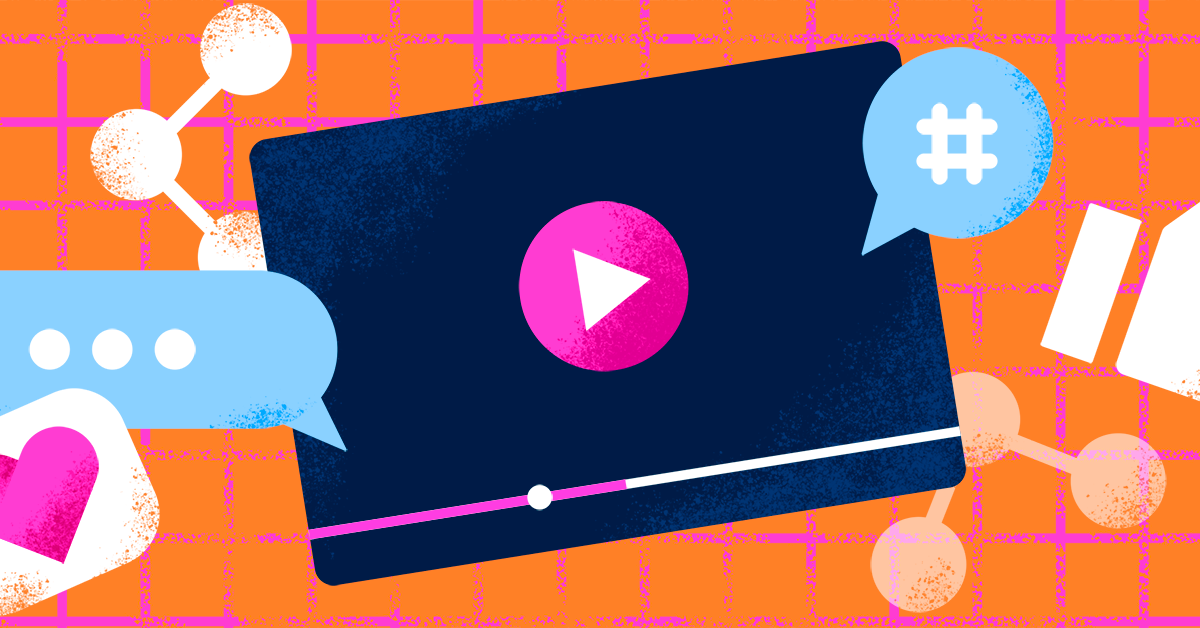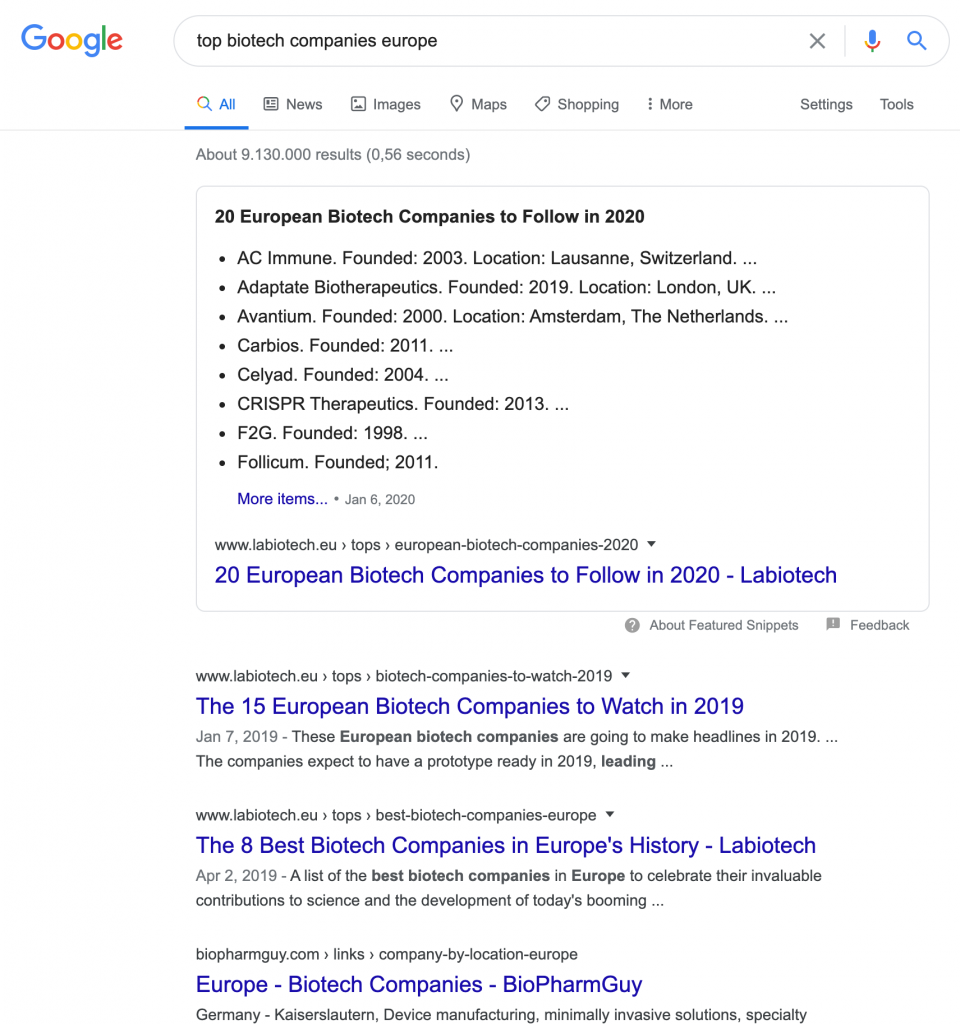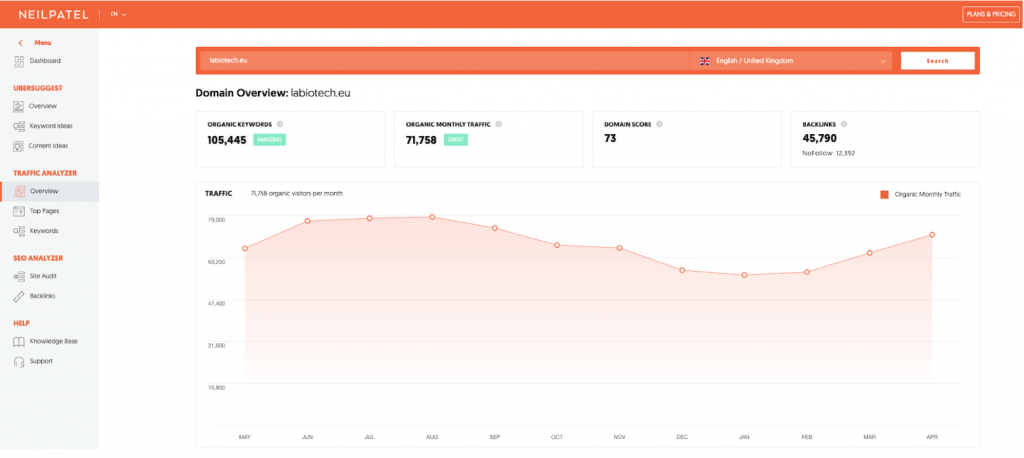As life science professionals, we not only continuously handle hard science and research, but we also have to learn how to market our products and interact with a large online audience. However, coming from the sciences, many of us struggle with bio-business.
Here is where you can start. In this article, we will take you through all the essential aspects of digital marketing for biotech and life science companies. You will learn the basic concepts of digital life science marketing and how to connect them with your company’s marketing strategy, or your future business.
First, let’s recap the difference between B2B and B2C.
What do B2B and B2C mean?

B2B stands for business-to-business, which is a process of selling products or services to other businesses. Whereas B2C stands for business-to-consumer, meaning your product or service is sold directly to individual consumers.
Most biotech and life science companies are driven by B2B models. One example of a B2B in the biotech market is Novozymes, as the company produces enzymes and commercializes it to other companies, which will apply these molecules to their industrial processes.
Lactobio, on the other hand, produces probiotic-based skin care products, and they are commercialized directly to individual consumers, illustrating a B2C case.
These two business models aim to draw the attention of two distinct audiences, which differ in scale, cost, communication, sales, and logistics. Therefore, the way you develop a marketing strategy for your product or service tailored to these targets varies.
Understand your target market

If we are analyzing a B2B case, the marketing strategy is dedicated to the needs, interests, and challenges of customers who are making purchases on behalf of their organization.
In the example above, Novozymes’ account managers will search the industry for decision-makers who apply enzymes in their processes. While in B2C cases, we are talking about people in their everyday lives.
In order to understand your customer’s behavior, look for the common characteristics, needs, and demographics of your target group. Your target market is the group of people you want to reach through your life science marketing pitch.
But be careful, your target can’t be everyone. A product will always have a specific niche, and you must understand that niche if you want to dominate it.
The better you understand your product’s niche, the more customized your communication in the form of relevant content, ads, and messaging can be. Consequently, with more audience insights, you will also see your conversion rates growing, and you will get a better return of investments — metrics that matter to all marketers!
Here are a few steps to develop your audience research:
1. List all the benefits your product or service is offering.
Who is in need of these benefits? Who is interested in them? How can your product benefit the customer?
2. Check your current customer base (if you have one)
Get started with the basic information. Check all the information possible about your current customers, such as age, location, language, spending power, patterns, interests, stage of life.
If you are analyzing a B2B model, you might want to collect information focused on the companies you are selling to, like company size, the title of the people making the buying decisions — be it the CEO, the CTO, or the production manager — revenue, and biggest challenges.
3. Watch your competitors
Now that you know who your main customers are, look at your competitors. Who are they targeting? What kind of communication are they using and how are they positioning themselves?
Analyzing your competitors might provide you great input on do’s and don’ts, and also tell what segments you should focus on, instead of working on the exact same ones.
4. Create your detailed persona
At this point, you have already collected a lot of information about your audience, so it’s time to create an in-depth persona, or in other words, a real human being representing your typical customer.
Let’s take Lactobio as an example. This company has recently launched a new product for acne-prone skin with a novel approach, applying live probiotic bacteria to reduce pimples and impurities. In order to draw the ideal buyer persona for this product, you would consider:
- Your buyer persona’s age: teenagers, young adults with acne issues, or even parents buying for their children.
- Your buyer persona’s location: Your main customers would probably primarily come from Denmark, as Lactobio is a Danish brand, but could also include European or international buyers, as the company also offers an English website.
- The interests of your buyer persona: as the product is innovative and offers a new approach to treating the problem, the audience would probably consist of millennials and influencers — people interested in experimenting with new things, educated adults or parents who work in the field of science and tech, as they would more likely understand the mechanism of the product and support the science behind it.
Ask yourself, what’s your buyer persona’s daily routine? Their aspirations? Their reading and social media habits? Their purchase behavior, do they buy online? The list of questions is long, and as we mentioned before, the more you know, the better.
Good knowledge of your audience will allow you to develop a great marketing pitch to attract the right customers to your product or service.
Branding

What do you see when you think about a brand? Most of us will picture the logo and the color palette in our minds.
Strong brands have reached a level where they don’t need to write their names on their products anymore. They make a dominant visual impact on people and automatically occupy part of their memories, take Apple or GE healthcare, for example, you’ll recognize their logos anywhere. However, the logo itself does not build an identity.
It’s the way you communicate with the world, applying a range of tools, that makes you different from others and encourages people to engage with you.
Do you want to be recognized as an innovator? Or at the cutting-edge of science and discovery? No matter what your goal is, there is a psychology behind branding. Whether your business is in biotechnology, health care, or any life sciences, people tend to connect with it in a strong manner.
It’s a universal interest to follow medical advances and scientific progress. Human health becomes an emotional subject when it reaches people around us, and the psychology of human emotion can drive your branding construction.
As mentioned by Marty Neumeier, iconic branding master, “Your brand isn’t what you say it is. It’s what they say it is.”
We are talking about everything that expresses your brand and generates a feeling in people: logo, colors, typography, photography, iconography, illustration, video, motion, web design, data visualization, design system, interactive elements, and more.
All these elements must be distinct, memorable, cohesive, flexible, and easy to apply. Unfortunately, they do not come overnight, it requires deep thinking, strategy, and an intimate understanding of what your brand means.
Building the brand of your business is an emotional experience with your target audience. A fresh and innovative branding approach can be a good marketing strategy for small and new businesses who are finding their place in the market.
Social media for Life Science Marketing

Now that you know about the importance of an effective branding strategy, let’s talk about the benefits of social media on life science businesses.
You might find it confusing to imagine a biotech company using Facebook or Instagram to advertise themselves, but we are living in a time where social media has become crucial for marketing any kind of business.
Advertising through traditional channels, such as TV or print media, is not enough to reach your consumers and gain the attention of potentials anymore. Instead, social media can be extremely beneficial to generate brand awareness, drive traffic to your website or blog, and gain market insights.
In the field of life sciences, the favorite channels are LinkedIn and Twitter, and getting deep knowledge of how these and the other channels work, can boost your interaction with customers, and bring your business to another level.
At the end of the day, even scientists can be interested in spending time on social media, so it’s worth considering.
Content Marketing

Creating and providing meaningful content allows you to connect with your targeted audience.
The life science sector is full of professionals who are overwhelmingly busy but voracious learners. With the help of business-based language, content marketing is a strategy to expand and retain your audience by offering truly relevant content, which will ultimately drive sales.
When we talk about B2B models, content is the key to achieve your life science marketing goals. Instead of pitching your products or services to life science professionals, you get their attention by offering easy-to-digest content that can be useful to them and will help solve their problems.
For a detailed guide on how to create your content marketing strategy, check this article, where you will learn the minimum effective dose content strategy and how to avoid mistakes.
Search engine optimization and keyword research
Let’s say your branding is consistent, your social media is well on the way, but you do not get enough traffic on your website, and consequently, are not converting as many sales as you estimated.
It’s time to have a look at these two important components of your life science marketing strategy: search engine optimization (SEO) and keyword research.
Keyword research means looking for the keywords your target market uses when they are searching for content, services, or products. Why is it important to know important keywords?
Keywords are an essential part of your content strategy.
Having keywords inside your content will bring people to you more efficiently, and moreover, will help you answer questions like:
- What are people looking for?
- How many people are looking for it?
- When do they search their needs and interests, how and why?
- Which words do they use to search for their needs?
Optimizing your content to specific keywords will help you position your brand at the top of the search results on search engines, such as Google. This will increase your chances of getting traffic on your website. And now we are talking SEO.
Google is committed to delivering the highest quality result to your search, which means not every page will easily get a place in the top results. Only optimized pages providing the most related content will be there.

There is a whole world of search optimization concepts, techniques, and applications to boost your brand onto the first page of Google.
Companies with serious marketing goals usually have a full-time SEO professional dedicated to this part of the marketing strategy.
A great tool to analyze how your page is ranking (and your competitor’s as well) is Neilpatel. You can type your website address and have a great overview of how your pages are performing and which keywords are delivering the best results.
Let’s take a look at Labiotech.eu according to the Neilpatel app:

Based on these results you gain clear feedback on what works better and what doesn’t. This is powerful data, and it can boost your life science marketing strategy to another level.
Other tools to verify your SEO performance are SEMrush, MozBar, and Google Analytics.
Paid campaigns in Life Science Marketing
A well-optimized page will make a lot of difference, but sometimes that’s not even enough to convert sales. You will have to allocate part of your marketing resources in paid campaigns.
Nowadays, paid search has become a critical advertising component.
Paid search means you pay search engines to include your ads in search results. It works with a pay-per-click model, meaning you pay only when someone clicks on your ads.
Ads can be in different formats, such as texts and pictures, at the top or bottom of organic search results. Note that it is not possible to pay to place your website at the top of organic listings, that’s SEO work you’ll have to do yourself.
Conversion optimization

Now let’s say you’ve done a great job on your SEO and you managed to bring visitors to your webpage. They are reading your content, checking your products, but are they buying?
In other words, is your content converting? This means your visitors take the action you want them to take, for example, buying your product.
In fact, your goal might be lead generation, engagement, sales, and awareness. If this is happening, you are converting.
You made it all the way here to build your brand, find the keywords, sharpen your SEO. Now you need to think about how to retain your visitors and make them convert.
These five strategies are the easiest way to turn your visitor into a customer and increase profits:
- Use colloquial language to engage your visitor. In a world where machines are taking over, people tend to miss the human touch, At the end of the day, make them feel that a real person is on the other side of the screen.
- Create a sense of urgency. Proven by studies, people feel more tempted to buy something when they feel time pressure.
- Conduct A/B testing. Testing, testing, testing. You won’t know immediately what works best for your marketing strategy, it’s all about being flexible and adapting continuously.
- Define your customer value proposition and make it visible. People need to know why they should buy from you and not from the competitor.
- Make your customer feel comfortable about their purchase decision. For example, you can add an FAQ to your website, or testimonials, or live chats to answer questions in real-time.
So, now that you’ve gained this new knowledge, it’s time to take action! With this overview, we hope to have clarified the basics of life science marketing for businesses in the industry. For a deep understanding of each of the mentioned areas, check out our life science marketing tips for biotech and biopharma here.
At Labiotech, we create compelling digital biotech content for our readers from around the world. If you want to know more about how we are sustaining the digital transformation and how we reach the right audience, book a call with our team or download our 2020 media kit for more information! We are always happy to share our wisdom with you!





